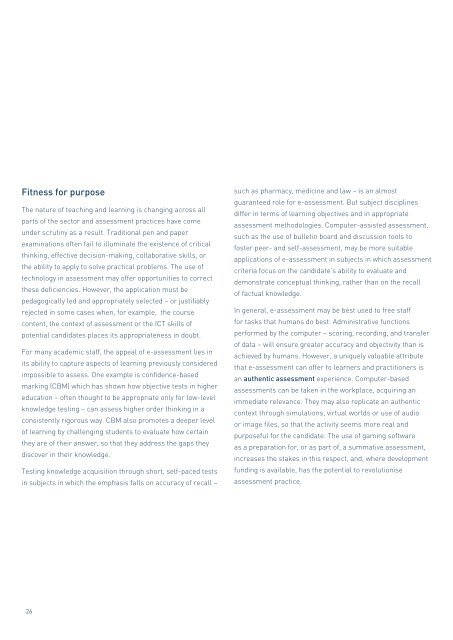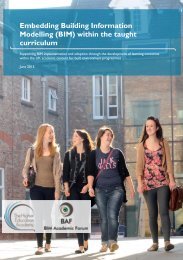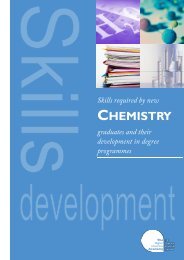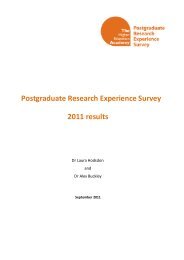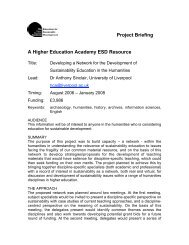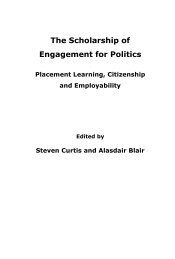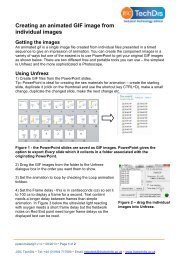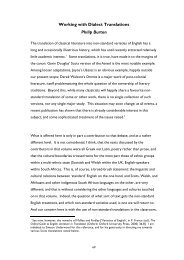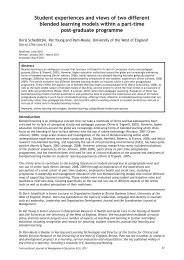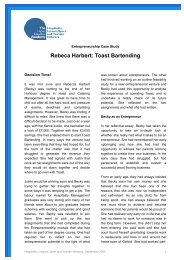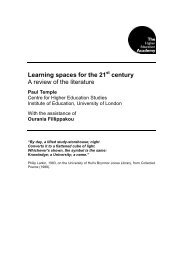Effective Practice with e-Assessment: An overview of ... - Jisc
Effective Practice with e-Assessment: An overview of ... - Jisc
Effective Practice with e-Assessment: An overview of ... - Jisc
Create successful ePaper yourself
Turn your PDF publications into a flip-book with our unique Google optimized e-Paper software.
Fitness for purpose<br />
The nature <strong>of</strong> teaching and learning is changing across all<br />
parts <strong>of</strong> the sector and assessment practices have come<br />
under scrutiny as a result. Traditional pen and paper<br />
examinations <strong>of</strong>ten fail to illuminate the existence <strong>of</strong> critical<br />
thinking, effective decision-making, collaborative skills, or<br />
the ability to apply to solve practical problems. The use <strong>of</strong><br />
technology in assessment may <strong>of</strong>fer opportunities to correct<br />
these deficiencies. However, the application must be<br />
pedagogically led and appropriately selected – or justifiably<br />
rejected in some cases when, for example, the course<br />
content, the context <strong>of</strong> assessment or the ICT skills <strong>of</strong><br />
potential candidates places its appropriateness in doubt.<br />
For many academic staff, the appeal <strong>of</strong> e-assessment lies in<br />
its ability to capture aspects <strong>of</strong> learning previously considered<br />
impossible to assess. One example is confidence-based<br />
marking (CBM) which has shown how objective tests in higher<br />
education – <strong>of</strong>ten thought to be appropriate only for low-level<br />
knowledge testing – can assess higher order thinking in a<br />
consistently rigorous way. CBM also promotes a deeper level<br />
<strong>of</strong> learning by challenging students to evaluate how certain<br />
they are <strong>of</strong> their answer, so that they address the gaps they<br />
discover in their knowledge.<br />
Testing knowledge acquisition through short, self-paced tests<br />
in subjects in which the emphasis falls on accuracy <strong>of</strong> recall –<br />
such as pharmacy, medicine and law – is an almost<br />
guaranteed role for e-assessment. But subject disciplines<br />
differ in terms <strong>of</strong> learning objectives and in appropriate<br />
assessment methodologies. Computer-assisted assessment,<br />
such as the use <strong>of</strong> bulletin board and discussion tools to<br />
foster peer- and self-assessment, may be more suitable<br />
applications <strong>of</strong> e-assessment in subjects in which assessment<br />
criteria focus on the candidate’s ability to evaluate and<br />
demonstrate conceptual thinking, rather than on the recall<br />
<strong>of</strong> factual knowledge.<br />
In general, e-assessment may be best used to free staff<br />
for tasks that humans do best. Administrative functions<br />
performed by the computer – scoring, recording, and transfer<br />
<strong>of</strong> data – will ensure greater accuracy and objectivity than is<br />
achieved by humans. However, a uniquely valuable attribute<br />
that e-assessment can <strong>of</strong>fer to learners and practitioners is<br />
an authentic assessment experience. Computer-based<br />
assessments can be taken in the workplace, acquiring an<br />
immediate relevance. They may also replicate an authentic<br />
context through simulations, virtual worlds or use <strong>of</strong> audio<br />
or image files, so that the activity seems more real and<br />
purposeful for the candidate. The use <strong>of</strong> gaming s<strong>of</strong>tware<br />
as a preparation for, or as part <strong>of</strong>, a summative assessment,<br />
increases the stakes in this respect, and, where development<br />
funding is available, has the potential to revolutionise<br />
assessment practice.<br />
26


